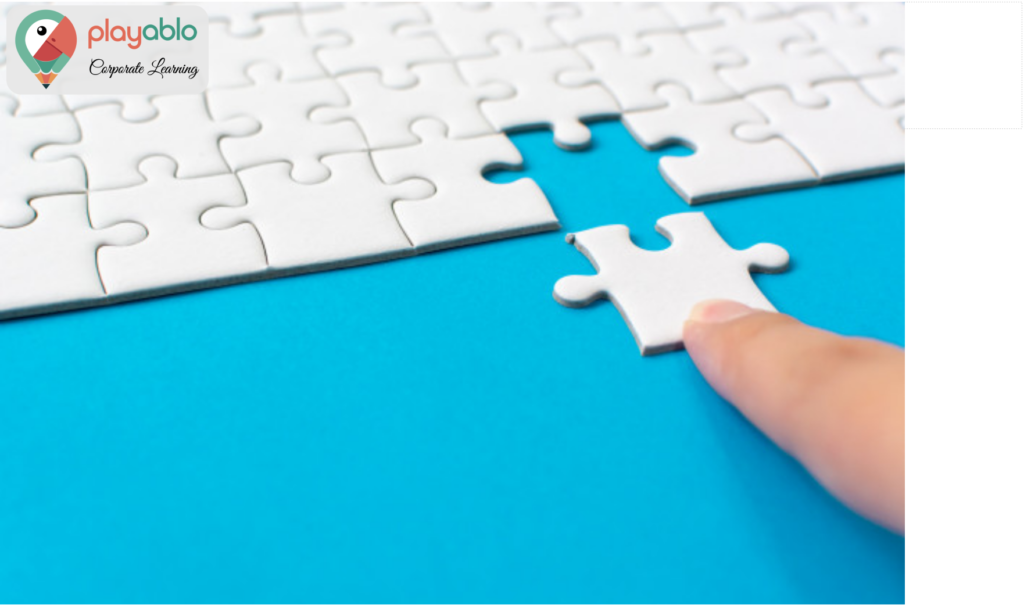“Learning experiences are like journeys. The journey starts where the learning is now and ends when the learner is successful. The end of the journey isn’t knowing more, it’s doing more” — Julie Dirksen. Yes, continuous learning forms an inevitable part of your workplace culture of learning. The moment an employee joins your organization, the path to learning starts. After all, humans are biologically wired to learn! Employees learn about their roles, skillsets, company policies, and even their peers — during their tenure in your organization.

So, how do you tweak this innate human tendency — so that your employees are aligned with your business goals, values, and overall vision? And how do you ensure that this knowledge is transmitted to the entire workforce without any gaps? The answer is to create a culture of learning.
A continuous learning culture may take time to be implemented. But trust us, the results are long-term and offer impressive, multiple perks. Now, how do you go about designing a full-fledged culture of learning in your company? Let’s get started!
Table of Contents
How to Build a Culture of Learning in Your Organization?
- 39% of employees in the U.S. consider the potential for growth as a contributor to employee satisfaction (Levanon et al., 2019).
- LinkedIn’s 2018 Workplace Learning Trends reported that 94% of employees would stay longer in companies that are willing to invest in their professional development
As you can see, corporate learning — which translates to career growth — is a vital factor in ensuring employee satisfaction and retention. And a dedicated, long-term workforce is essential for the success of your business. Therefore, establishing a learning culture is not a luxury but a necessity. To help you get started, our tried and tested tips might prove helpful.
Start off by Looking at Your Current Learning Strategy

Even if you do not have a formal learning strategy in place, you should know that learning is still happening — in some way or the other — maybe informal. Either way, you can begin by assessing how your employees are learning at the moment. This is how you can identify the gaps, if any, in your existing learning strategy. Once your assessment is complete, you can proceed to the next step.
Plan and Research
A structured and formalized learning format is essential to impart knowledge on the core aspects of your business. For instance, you will need to have full-fledged training sessions for subjects like product knowledge, sales, compliance and codes of conduct, or onboarding … the list goes on. Proper planning is necessary for each of these training types.
Planned training sessions allow the HR and L&D leadership to create a knowledge base — which is uniform throughout the organization. It also enables the management to assess if everyone has received the same resources.
Identify Subject Matter Experts

Whether it’s online learning or offline sessions, you have to create training materials to establish a culture of learning in your organization. Now, when you have a plethora of information scattered everywhere, segmenting this knowledge into targeted, bite-sized chunks seems difficult. In this case, you should identify subject matter experts who will create content for your employees.
Or, you can seek the help of a platform like PlayAblo. Our experts will scan your raw, existing knowledge inventory and segment it into customized, bite-sized, and manageable chunks, which can be optimized on any device!
Ad: PlayAblo’s Enterprise-Grade Micro-Learning platform is built for millennial learners. Micro-Learning along with assessments and gamification features ensure learning outcome measurement along with sustained engagement.
Find out more and request a custom demo!
Involve Your Employees
Your employees’ inputs are vital when you decide to design a full-fledged culture of learning in your company. Ask them about existing knowledge gaps, improvement areas, and what skills they would like to cultivate. This feedback can be captured through different channels — face-to-face interactions, emails, or an LMS.
Ensure Accessibility
You might have a gamut of training materials at your disposal. But what is the point if your employees have to go through numerous steps to access them? Getting hold of learning materials should be a seamless and friction-free process. For instance, if you have an integrated LCMS in place, make sure that it has a user-friendly interface. Or, build a learning culture that’s accessible on the go. One of the best learning management system features to embrace this is to promote flexible mobile learning.
Try Different Learning Methods

Different stages and types of learning require different training formats. For less formal training, you can try face-to-face interactions or coaching sessions. For more formal training, it’s better to go for a full-fledged LMS. Or, if you want the best of both worlds, try a blended learning model. To increase the eligibility factor, you can mix various learning formats — such as multimedia, webinars, live classes, ILTs, slideshows – to name a few.
Think of Company-wide Integration
To ensure that your entire workforce has access to a company-wide resource library, create a central repository by using an LMS. Learners can log into this platform whenever required and choose a document, video, or slideshow, that addresses the topic they want to learn about. On the other hand, a mobile-friendly LMS or a micro-learning module allows your employees to dip into training on the ego. With BYOD becoming a current practice, mLearning is an extremely beneficial platform.
Introduce the Social and Fun Factor
Interaction and collaboration are necessary to ensure shared learning. People love to chat, discuss new ideas, share resources, and know about different perspectives. If you have a forum feature in your LMS, employees can ask and answer questions and share various opinions.
Again, to remove the concept that learning is a dull and drab exercise, you can embed the fun factor in your sessions — by introducing gamified training. When you reward trainees with points, leadership boards, and badges, it motivates them to keep coming back until they have mastered a topic.
Ad: PlayAblo’s Enterprise-Grade Micro-Learning platform is built for millennial learners. Micro-Learning along with assessments and gamification features ensure learning outcome measurement along with sustained engagement.
Find out more and request a custom demo!
Introduce Feedback
Absorbing knowledge and completing training sessions without continuous feedback is futile. Learners need to understand if what they have learned is enough and correct. Only then, they will improve and progress — to achieve the required goals.
Track and Measure
When you introduce a formal culture of learning in your organization, remember to measure its success. You must keep track of the engagement levels, completion rates, exam results, training histories, among others. This will enable you to measure the success of your learning culture within the company. Continuous monitoring is also vital to tweak and adapt your courses — as per changing requirements and demands.
Wrapping it Up
Learning should be a top priority area since day 1. The best LMS for corporate training should engrain the concept of absorbing knowledge every day in your workplace culture. You can start this with a comprehensive onboarding program — which you can expand to include sessions continually. Also, set aside enough time to learn — amidst strict deadlines, on-going projects, and endless meetings. And remember — a learning culture is not a one and done practice. You need to constantly improve on it — enhancing it with new resources until learning becomes a continuous process in your company.







10 Comments